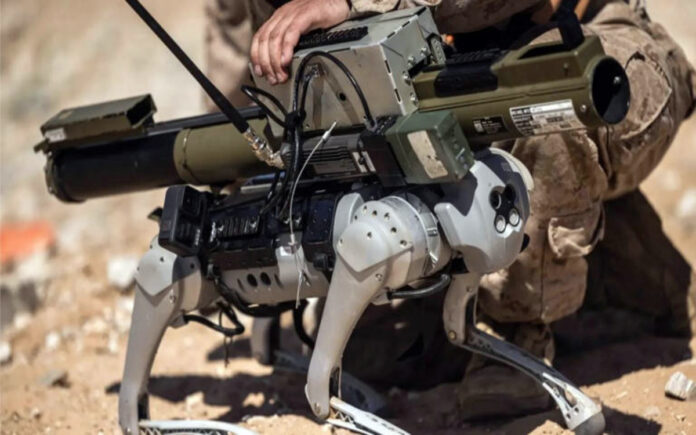Beijing: China recently unveiled its state-of-the-art military technology, including robot “dogs” equipped with machine guns and rocket launchers, during its largest-ever joint military exercises with Cambodian forces. This demonstration of military prowess comes amid heightened concerns in the United States regarding China’s growing influence in Cambodia and the wider Southeast Asian region.
Cambodia boasts strong ties with China and harbors anti-US sentiment, while China has made significant investments in the region. These factors have raised serious concerns in Washington over Beijing’s potential use of Cambodian infrastructure, particularly the naval base it is upgrading on the Gulf of Thailand, to expand its regional influence.
The joint military drills, dubbed Golden Dragon, involved over 2,000 troops, including 760 Chinese military personnel, and featured an impressive array of warships, helicopters, armored vehicles, and tanks.
Spanning 15 days, the exercises encompassed a diverse range of activities, from live-fire demonstrations to anti-terrorism operations and humanitarian rescue missions.
A notable highlight of the drills was the presence of “robodogs” — remote-controlled, four-legged robots armed with automatic rifles and, in some cases, rocket launchers. While their shooting capabilities were not demonstrated during the exercise, the inclusion of these robotic warriors underscores China’s advancements in military technology.
It’s highly likely that China intends to deploy these robodogs in conflict zones soon, as evidenced by their participation in joint military exercises. There’s a possibility that China allowed Cambodia to test and experiment with the battle-ready versions in local conflicts rather than deploying them directly.
Also Read | Poland Unveils ‘Drone Wall’ Defense Plan for Border with Russia and Ukraine
In a statement, Cambodian armed forces commander-in-chief Vong Pisen emphasized that the exercises would enhance the counter-terrorism capabilities of both armies, reaffirming Cambodia’s stance against hosting foreign military bases.
The upgrading of Cambodia’s Ream naval base, partially funded by China, has raised concerns in Washington due to its strategic location near the disputed South China Sea, seen as advantageous to Beijing’s maritime ambitions.
Also Read | Philippines Protests China’s Annual Fishing Ban in South China Sea
Despite assurances from Cambodian officials that the naval base will not host foreign troops, the presence of Chinese warships at Ream underscores China’s growing maritime influence. The drills underscore the deepening military cooperation between China and Cambodia, with Beijing covering the costs of the exercises.
The Golden Dragon exercises represent a shift from previous joint exercises involving US forces, such as “Angkor Sentinel,” which Cambodia discontinued in 2017. Instead, Cambodia has increasingly leaned towards closer military ties with China, culminating in the current series of joint drills.
China’s diplomatic efforts in Cambodia, including the visit of top diplomat Wang Yi in April, highlight Beijing’s commitment to strengthening bilateral relations and solidifying its influence in the region.
As China demonstrates its military capabilities through joint exercises with Cambodia, the United States remains watchful of Beijing’s expanding presence in Southeast Asia, underscoring the strategic significance of the region in the broader geopolitical landscape.



